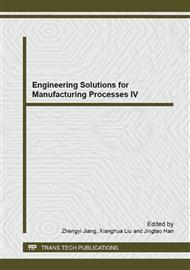p.92
p.97
p.101
p.107
p.113
p.119
p.125
p.130
p.135
Reverse Design from Virtual Manufacturing
Abstract:
The aim of this paper is to present the advantages and the vision of Reverse Design from virtual manufacturing. With the reverse design method, the real geometry after manufacturing process (by simulation) was predicted. In the first part of the study, comparisons were made between difference cases (the injection position and the amount of the pin gates). Based on the results from simulation, it is clear that 4 pin gates are better choice. In the second part, under the 4 pin gates working condition, considering the warp from the injection molding process, the actual minimum gap between the fan and the frame after assembly is smaller than the original designed gap. Therefore, to get the ideal product to keep the designed gap between the fan the frame, the radius of the fan should be reduced or the radius of the frame should be increased. While in other case, which was simulated with 3 pin gates, the real gap is larger than the original gap. Therefore, to get the ideal product, the radius of the fan should be increased or the radius of the frame should be reduced. In conclusion, original designed parameters could be modified, with the help of virtual manufacturing (by simulation) to make the assembly more accurately efficiently.
Info:
Periodical:
Pages:
113-118
Citation:
Online since:
February 2014
Authors:
Keywords:
Price:
Сopyright:
© 2014 Trans Tech Publications Ltd. All Rights Reserved
Share:
Citation:


